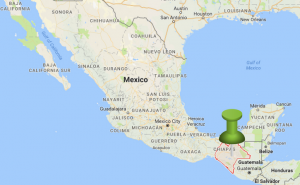Cumberland Island National Seashore is truly a gem of the US National Park system. This barrier island in coastal Georgia boasts pristine natural beaches, gorgeous oak tree tunnels, famous wild horses, and storied history. It all makes for quite...
Cumberland Island National Seashore is truly a gem of the US National Park system. This barrier island in coastal Georgia boasts pristine natural beaches, gorgeous oak tree tunnels, famous wild horses, and storied history. It all makes for quite an enchanting place to roam around.
Accessible only by boat, Cumberland Island is not the easiest place to reach. Yet those who make a day trip to Cumberland Island do tend to be rewarded handsomely. The twice-a-day Cumberland Island ferry only holds 145 people, which helps to ensure you�ll run into more wildlife than people while hiking through the island�s old-growth canopies and deserted beaches.
There�s loads of wildlife too! Most notably, wild horses roam free on the beaches of Cumberland Island National Seashore! Yet visitors also regularly encounter deer, wild turkeys, armadillos, feral pigs, and even dolphins jumping around in the ocean. A trip to Cumberland Island is an awesome journey for any nature lover to take.In addition to nature, there�s also a lot of history and lore to discover on Cumberland Island that spans several centuries. In the 1700s, Revolutionary War general Nathanael Greene founded the island. In the 1800s, the Carnegies bought it. In the 1900s, JFK Jr. was married here.
Other than a handful of historic buildings and some National Park structures, this barrier island remains in a completely natural state. There are no condos. No traffic. No restaurants. It�s a beautiful thing! The natural setting is part of Cumberland Island�s vast appeal.
It�s for all these reasons that first drew us to visit Cumberland Island Georgia! This Cumberland Island travel guide was written to share our discoveries and spill our signature travel tips to help others visit this special place we found lying off of Georgia�s marshy southeastern coast.
Table of Contents:
How to Get to Cumberland Island by Ferry Main Attractions: What to See on Cumberland Island What to Do on Cumberland Island: 4 Day Trip Itineraries Tour |
Tour |  Bike |
Bike |  Hike |
Hike |  Beach
Where to Stay in & around Cumberland Island
More Cumberland Island Travel Tips
What to Pack for Cumberland Island
Beach
Where to Stay in & around Cumberland Island
More Cumberland Island Travel Tips
What to Pack for Cumberland Island
How to Visit Cumberland Island, Georgia
 Where: Ferry departs from St. Marys, GA, located here.
Where: Ferry departs from St. Marys, GA, located here.
 Cost to visit in 2023: $60.20 total for adults
Cost to visit in 2023: $60.20 total for adults
($15 park fee + $40 +tax roundtrip ferry)
 Ferry times (2023): Depart: 9:00 am, 11:45 am.
Ferry times (2023): Depart: 9:00 am, 11:45 am.
Return: 10:15 am, 2:45 pm (Mar-Sept), 4:45 pm.
 Accommodation: Historic luxury hotel or primitive camping. Additional hotels nearby, off the island.
Accommodation: Historic luxury hotel or primitive camping. Additional hotels nearby, off the island.
 Things to do: Enjoy beaches, hike, birding, wildlife viewing, explore history, take a tour.
Things to do: Enjoy beaches, hike, birding, wildlife viewing, explore history, take a tour.
How to Get to Cumberland Island by Ferry
You cannot drive to Cumberland Island. It�s an island, only accessible by boat. There are no car ferries. But there is a 145-person passenger ferry.
Without your own boat, Cumberland Island National Seashore is accessed from the charming town of St. Marys, Georgia. The Cumberland Island Visitor Center is located in St. Marys and this is where you board the Cumberland Island ferry.
The Cumberland Island ferry departs daily at 9:00 am and 11:45 am. It�s a scenic 45-minute scenic boat ride from St. Marys to Cumberland Island that straddles the Florida-Georgia border. Keep an eye out for dolphins!
The Cumberland Island ferry takes passengers to a point on Cumberland Islands called the Sea Camp Dock (exact location here on Google Maps). Once you arrive at the Sea Camp Dock, you�re on your own to explore Cumberland Island unless you�ve booked a tour. We�ve detailed all options of what to do in Cumberland Island later in this article.
Getting to St. Marys to catch the Cumberland Island ferry is an easy and straightforward drive. It�s less than an hour�s drive from Jekyll Island, GA or Fernandina Beach, FL. It�s also convenient to Jacksonville FL (less than an hour) and Savannah, Georgia (2 hours).
Whichever way you�re coming from, simply take I-95 to GA exit 3. Another 9 miles (15-20 minutes) down State Route 40 brings you to St. Marys, where the road ends and the ferry begins.
 Tips for Taking the Cumberland Island Ferry
Tips for Taking the Cumberland Island Ferry
Be sure to book Cumberland Island ferry tickets in advance. With only two departures daily, it�s best to reserve ferry tickets in advance. The ferry does sell out, particularly so during popular weekends. As of May 2023, Cumberland Island ferry tickets are $20 (+tax) each way for adults. That totals $45.20 for ferry tickets to Cumberland Island and back to St. Marys. Buy ferry tickets here.
The separate $15 admission to the Cumberland Island National Seashore is easily purchased upon arrival at the Visitor Center in St. Marys.
Get a ticket for each way: The Cumberland Island Ferry ticketing website is a bit clunky, as customers must reserve two separate ferry tickets. There is currently no option to purchase a single roundtrip ticket. Instead, one ticket is needed to Cumberland Island, and another to return back to St. Marys. It could be an easy mistake to accidentally buy a one-way ticket, in which you could get stuck on the island. Ensure you book tickets for each way.
Arrive early: Passengers are asked to check in at the Visitor Center in St. Marys one full hour prior to the ferry departing. Sometimes lines can form, given that 145 people need to park, buy their park admission at the Visitor Center, confirm their ferry tickets, and board the ferry. Ensure you allow time to take care of everything.
Free parking here: St. Marys has plenty of unmetered parking spots on the streets, but do NOT park there. Those parking spaces have restricted hours and are not conducive to leaving your car all day long. Instead, there is a designated parking lot for those who are taking a day trip on the ferry over to Cumberland Island. It�s located one block west of the Visitor Center, with the exact location pinpointed here on Google Maps.
What to See during a Cumberland Island Day Trip
There are several notable attractions lying all over Cumberland Island National Seashore. Yet given the island is over 56 square miles, it�s simply not possible to see everything during a single Cumberland Island day trip.
So before venturing out to this scenic barrier island, it�s important to prioritize which sights to visit during a Cumberland Island day trip.
The following attractions are what most visitors seek out during a day trip to Cumberland Island:
 Natural Beaches:�Spanning 17 miles along the eastern coast of the island are beautiful natural beaches that Cumberland Island is often recognized for.
Natural Beaches:�Spanning 17 miles along the eastern coast of the island are beautiful natural beaches that Cumberland Island is often recognized for.
 Dungeness & the Historic District � On the south end of the island, about 1.5 miles from the Sea Camp ferry dock, the area known as the Historic District. It�s punctuated by the remaining ruins of the Carnegies� expansive 59-room mansion, Dungeness, which fell victim to fire in 1959. There is also a former ice house, which now houses a small museum. Free 90-minute guided tours from the Sea Camp Dock are available, based on ranger availability, at 10:00 and 12:30.
Dungeness & the Historic District � On the south end of the island, about 1.5 miles from the Sea Camp ferry dock, the area known as the Historic District. It�s punctuated by the remaining ruins of the Carnegies� expansive 59-room mansion, Dungeness, which fell victim to fire in 1959. There is also a former ice house, which now houses a small museum. Free 90-minute guided tours from the Sea Camp Dock are available, based on ranger availability, at 10:00 and 12:30.
 �The Settlement � Located way up on the north side of the island, the Settlement includes the Stafford Plantation and the First African Baptist Church, notable for the secret wedding of JFK Jr.
�The Settlement � Located way up on the north side of the island, the Settlement includes the Stafford Plantation and the First African Baptist Church, notable for the secret wedding of JFK Jr.
 The Plum Orchard Mansion � Located 7 miles north of the Sea Camp ferry dock, this Carnegie mansion has been maintained with period furnishings from the early 1900s. Free guided tours (11:00, 1:00, and 2:00) lead visitors around the sprawling estate
The Plum Orchard Mansion � Located 7 miles north of the Sea Camp ferry dock, this Carnegie mansion has been maintained with period furnishings from the early 1900s. Free guided tours (11:00, 1:00, and 2:00) lead visitors around the sprawling estate
 Wild Horses & Other Wildlife � Feral horses roam free throughout Cumberland Island and they tend to be in greatest abundance on the south end and around the Historic District. Deer, wild turkeys, feral pigs, armadillos, and even coyotes can also be found roaming around Cumberland Island. And lots of bird species make a home here too!
Wild Horses & Other Wildlife � Feral horses roam free throughout Cumberland Island and they tend to be in greatest abundance on the south end and around the Historic District. Deer, wild turkeys, feral pigs, armadillos, and even coyotes can also be found roaming around Cumberland Island. And lots of bird species make a home here too!
Things to Do in Cumberland Island & Day Trip Itineraries:
There are a number of different things to do during a Cumberland Island day trip. The following four day Cumberland Island itineraries offer suggestions on what to do at Cumberland Island once the ferry drops passengers off at the Sea Camp Dock.
It�s a wise idea to have some idea of what you want to do in Cumberland Island so that you can prepare accordingly. Then once you arrive at the Sea Camp Dock, you can set off on your adventure without confusion.
Yet you can still stop at the Sea Camp Ranger Station to discuss plans with a friendly ranger. They can help point you in the right direction and offer up-to-date tips based on weather and current conditions.
Here are four different ways to spend a Cumberland Island day trip:
 Lands and Legacies Tour
Lands and Legacies Tour
 Bike to Plum Orchard Mansion
Bike to Plum Orchard Mansion
 Hike the Southend Loop Trail
Hike the Southend Loop Trail
 Enjoy a Beach Day
Enjoy a Beach Day
1) Cumberland Island Lands and Legacies Tour
 Best for:
Best for:
 Transport: By air-conditioned van
Transport: By air-conditioned van
 Cost: $65 +tax/fee for the tour = $73.45 (add ferry & park fee = $118.65 total)
Cost: $65 +tax/fee for the tour = $73.45 (add ferry & park fee = $118.65 total)
 Time: 5-6 hour Cumberland Island tour
Time: 5-6 hour Cumberland Island tour
 What you�ll see: The Settlement, the Stafford plantation & cemetery, the First African Baptist Church, the Cumberland Wharf, and a full tour of the Plum Orchard Mansion, oak forest scenery along the main road
What you�ll see: The Settlement, the Stafford plantation & cemetery, the First African Baptist Church, the Cumberland Wharf, and a full tour of the Plum Orchard Mansion, oak forest scenery along the main road
 What you may miss: natural beaches, Dungeness ruins, Historic District, icehouse museum, horses
What you may miss: natural beaches, Dungeness ruins, Historic District, icehouse museum, horses
Summary of Lands & Legacies Tour:
The Lands & Legacies tour is truly the best way to pack in as much as possible during a Cumberland Island day trip. It�s also the only motorized tour of Cumberland Island, making it the best option for those with mobility issues.
During this guided tour, a van traverses the park�s dirt roads in order to visit all the most notable points of interest on the north side of the island, which are further flung from the Cumberland Island ferry dock.
Without this tour, it�s virtually impossible to be able to visit the Robert Stafford plantation and the Settlement during a Cumberland Island day trip. These historic attractions are 30 miles round-trip from the ferry docks.
At the Settlement, a visit to the Stafford plantation delves deep into his unconventional slave-handling practices, among the plantation�s ruins that are still left dilapidating on the island today. Yet a highlight of the Settlement tends to be visiting the one-room First Baptist Church, established in 1893 and rebuilt in the 1930s. This was the site of John F. Kennedy Jr.�s secret wedding.
Then, the Plum Orchard Mansion gives visitors a glimpse into the grand Carnegie estate that�s been well-preserved. Period furnishings offer a look into what high society life was like on Cumberland Island in the early 1900s.
Finally, passengers on the Lands & Legacies tour may be treated to a brief drive through the Historic District on the southern part of Cumberland Island, if time permits. The official route during this Cumberland Island tour does NOT include a visit to the Historic District, so it should not be expected that this area will be visited.
However, we found that those on the Lands & Legacies tour are sometimes treated with a drive through the historic district. A ranger confirmed to us that this is a regular practice. The tour guide dangles this carrot to passengers to motivate them to stay on time during the tour. If a good pace is kept throughout the day, then a drive through the Historic District may be included.
More information and booking: This tour is offered by the Cumberland Island Ferry and tickets can be booked online in advance. Visit the official website: here.
2) Bike to Plum Orchard Mansion
 Best for:
Best for:
 Transport: Bike
Transport: Bike
 Cost: $16 bike rental on Cumberland Island or $10 fee to ferry your own bike
Cost: $16 bike rental on Cumberland Island or $10 fee to ferry your own bike
 TimeLength: 3-5 hour cycle round-trip from ferry docks to Plum Orchard Mansion
TimeLength: 3-5 hour cycle round-trip from ferry docks to Plum Orchard Mansion
 What you�ll see: Plum Orchard Mansion and possibly time to visit Dungeness ruins in the Historic District
What you�ll see: Plum Orchard Mansion and possibly time to visit Dungeness ruins in the Historic District
 What you may miss: Beaches, The Settlement, Stafford Plantation, First African Baptist Church
What you may miss: Beaches, The Settlement, Stafford Plantation, First African Baptist Church
What to Expect Biking to Plum Orchard Mansion:
Cycling to the Plum Orchard Mansion can make for a great plan to consider during a Cumberland Island day trip. It�s a scenic seven-mile pedal each way through the oak tree canopy of the main road.
Bikes are easy to rent at the Sea Camp Dock, where the Cumberland Island ferry arrives. Depending on recent rains and the current road conditions, the pedal may not be quite as easy on the sandy roads. It can easily take up to five hours for the round-trip bike route to the Plum Orchard Mansion.
Be sure to factor in time to go on the free Plum Orchard Mansion tour. Then once allocating time for lunch and stops for possible wildlife spotting, biking to the Plum Orchard Mansion may fill the entire Cumberland Island day trip.
Yet there�s a fair chance that speedy cyclists will further have the opportunity to double back past the Sea Camp Dock and pedal the additional 1.5 miles each way to the Historic District to see the Dungeness ruins, making for a very full day cycling trip on Cumberland Island.
If attempting to incorporate both sites, it is recommended to visit Plum Orchard Mansion first. Then you�ll be able to catch one of the tours and get back to Sea Camp to assess whether there�s enough time to continue to the Historic District.
Bikes rented on Cumberland Island are not permitted on hiking trails. Visitors can cycle on the beach but only between Sea Camp and Dungeness dune crossings.
3) Hike the Southend Loop Trail
 Best for:
Best for:
 Transport: Feet, trekking around Cumberland Island. 4.3 miles.
Transport: Feet, trekking around Cumberland Island. 4.3 miles.
 Cost: Free to hike, after the combined $60 Cumberland Island ferry & park admission
Cost: Free to hike, after the combined $60 Cumberland Island ferry & park admission
 Time: 6 hours, 30 minutes
Time: 6 hours, 30 minutes
 What you�ll see: Hiking trails, beaches, marshes, feral horses, Historic District including Dungeness ruins and Icehouse museum.
What you�ll see: Hiking trails, beaches, marshes, feral horses, Historic District including Dungeness ruins and Icehouse museum.
 What you�ll miss: Northern areas: The First African Baptist Church, The Settlement, Stafford Plantation.
What you�ll miss: Northern areas: The First African Baptist Church, The Settlement, Stafford Plantation.
Details on Hiking the Southend Loop Trail:
There are many hiking trails throughout the National Seashore to consider. Yet the Southend Loop Trail is the most popular hiking route to take during a Cumberland Island day trip. And it�s popular for good reason.
This route is the best itinerary for those who desire to maximize their time on Cumberland Island by exploring on foot. The Southend Loop Trail, also known as the Dungeness Loop Trail, is a fantastic way to see a variety of different sights and environments on foot.
Really, this Southend Loop Trail is a series of interconnecting trails to form a 4.3-mile hike around the southern portion of Cumberland Island. It�s a fairly easy and flat trek that incorporates many of Cumberland Island�s different ecosystems, in addition to some of its historical highlights.
The network of trails is easy to navigate. An insert in the official Cumberland Island Map & Guide (available at the Visitor Center) even provides a small call-out with directions and distances.
The Southend Loop starts from the Sea Camp Dock and heads along Fancy Bluff Creek on the River Trail. The trail eventually opens up to a field where the former icehouse now holds a small museum. Further into the Historic District, you�ll come across the remnants of the famed 59-room Carnegie mansion known as Dungeness, built in the late 1800s but now stands as ruins due to a 1959 fire.
You can join a park ranger on this first portion of the Southend Loop for the 1.5-mile trek to Dungeness and a free tour of the Historic District. It�s called the Footsteps Tour and can be a great way to begin the Southend Loop before completing the hike on your own. The Footsteps Tour departs the Sea Camp Dock at 10:00, based on ranger availability.
The many picnic tables scattered around the Historic District make an ideal lunch stop, given you�ll likely be there close to Noon. Proper eating areas become more scarce on the remainder of the route. This Historic District is also a great place to find horses while hiking the Southend Loop Trail.
When the trail turns east, hikers will reach the Green-Miller cemetery, then a scenic marsh boardwalk. Soon after exiting the wetlands area, the dunes come into focus. It�s over those dunes where a walk up Cumberland Island�s untamed beaches begins. Consider taking a dip in the ocean.
After a 1.5-mile walk along the sand, don�t miss the marker for Sea Camp. It�s easy to spot, but it�s also easy to miss if you�re not looking out for it. That�s the place to cut across the island through a scenic canopy of oak trees that ultimately leads directly back to the Sea Camp Dock.
It�s a great trek that can easily fill an entire Cumberland Island day trip. Cumberland Island National Park suggests that it takes between 2-4 hours. That�s easily possible. Yet the Southend Loop trail can just as easily be stretched out to a 7+ hour hike when pausing often to take in the history, view & photograph wildlife, read plaques, stop for lunch, take a swim, and simply relax & enjoy the natural beaches.
For a map of this route, recent reviews of the trail, and photos see Dungenous Loop Trail on AllTrails. Consider downloading the AllTrails app on your phone to help navigate this trail when on Cumberland Island.
4) Enjoy a Beach Day on Cumberland Island
 Best for:
Best for:
 Transport: Feet, it�s a short half-mile stroll from the ferry dock to the beach
Transport: Feet, it�s a short half-mile stroll from the ferry dock to the beach
 Cost: Free beach access after paying the combined $60 Cumberland Island ferry & park admission
Cost: Free beach access after paying the combined $60 Cumberland Island ferry & park admission
 Time: 6 hours, 30 minutes
Time: 6 hours, 30 minutes
 What you�ll see: Beautiful unspoiled beaches
What you�ll see: Beautiful unspoiled beaches
 What you�ll miss: Everything else
What you�ll miss: Everything else
What to Expect during a Cumberland Island Beach Day:
For those who simply want to enjoy Cumberland Island�s natural undeveloped beaches, it is very possible to simply come here to partake in a relaxing beach day. This National Seashore boasts 17 miles of beach lining the island�s eastern coast.
It�s a special beach day to spend on Cumberland Island�s white sand, rolling dunes, and a backdrop of maritime forests. Pick a beach to relax on or go for a swim. Just realize that there are no lifeguards on duty on Cumberland Island, so swim with caution.
Looking for shells is another popular pursuit on Cumberland Island�s beaches. And even though Cumberland Island is a protected National Seashore, visitors are permitted to take seashells that are not occupied.
When packing for a beach day, just realize that you�ll need to carry your beach gear across the island to access the beach, the closest of which is a 15-minute walk. So pack smart. At the Sea Camp ranger station, carts are available for rent to help haul gear to the beach.
What�s the best beach on Cumberland Island?
The best beach on Cumberland Island will depend on your preferences and the time you have.
Most beachgoers that visit Cumberland go to Sea Camp Beach, as it is the closest beach to where the ferry drops off. So if you�re coming to Cumberland Island with heavy beach gear, Sea Camp Beach is definitely the beach to choose. Even though it�s the closest, it�s still a 15-minute walk, so be prepared for that.
Sea Camp Beach is also one of the two beaches on Cumberland that has facilities such as restrooms and showers. To get to Sea Camp Beach take a 15-minute stroll from the Sea Camp Dock past the Sea Camp campgrounds.
In addition to Sea Camp Beach, here are more Cumberland Island beaches to consider:
Dungeness Beach: Located towards the southern end of the island, this beach is near the ruins of the Carnegie Dungeness Mansion, so it can be a good way to mix history with a beach day. There�s also a good chance of seeing wild horses here. But be prepared to walk about two miles each way. No showers or restrooms. Little Greyfield Beach: Located between Sea Camp Beach and Stafford Beach, Little Greyfield is approximately a 1.7-mile walk from Sea Camp Docks. This quiet beach is close to the Greyfield Inn, so you may find guests of this exclusive hotel a Little Greyfield Beach. No showers or restrooms. Stafford Beach: Stafford Beach is nearly a 4-mile walk (each way) from the Sea Camp Dock, making it difficult for day trippers to reach. Cycling to Stafford Beach is feasible but those walking would have little time to enjoy the beach before turning back to catch the ferry. Stafford Beach is known to be a good spot for shelling on the island. The campground here has bathrooms and showers that beachgoers can use. North Beaches on Cumberland Island: The beaches become even more unspoiled and lesser visited the further north you go on Cumberland Island as these beaches also become increasingly difficult to reach.Whichever beach you choose, you�ll likely have an enormous stretch of natural beach all to yourself. Dip your toes in the ocean. Read a book. Enjoy a drink. Relax.
Cumberland Island Hotels & Lodging
To stay overnight on Cumberland Island options are limited to two extremes, which may appeal to either the rich or the rugged. There�s an all-inclusive luxury inn on the island with nightly rates starting at $825. On the other end of the spectrum, camping is possible for those who bring their own gear.
For those not wanting to take a luxury trip or a camping trip, a Cumberland Island day trip should prove to be the best option. Thankfully, there are some great mid-range and budget accommodation options nearby!
Staying somewhere close to the boat dock in St. Marys is helpful to get an early start. And it�s important to rise early to catch that first ferry, in order to maximize a full day trip to Cumberland Island National Seashore.
Below are some great options we personally vetted for where to stay, whether on or near Cumberland Island.
 Camping on Cumberland Island
Camping on Cumberland Island
For those who want an overnight experience, Cumberland Island has three wilderness camping areas and two basic campgrounds.
The wilderness campsites are the most primitive and have no facilities:
Hickory Hill: Located in a maritime forest, Hickory Hill camp is a 5.5-mile hike from the Sea Camp Dock. $9 permit required. Yankee Paradise: In the central interior of the island, Yankee Paradise Camp is a 7.5-mile hike from the Sea Camp Dock. $9 permit required. Brickhill Bluff: Overlooking the Brickhill River, this wilderness site is a 10.5-mile hike from the Sea Camp Dock. $9 permit required.If you prefer a bit more comfort and convenience, Cumberland Island has two basic campgrounds:
Sea Camp Campground: Located an easy walk from the Sea Camp Dock, this campground has restrooms, cold showers, and drinking water. Campsites have fire rings and picnic tables. $22 per night. Stafford Beach Campground: A 3.5-mile walk from the Sea Camp Dock, Stafford Beach Campground is a more secluded option, that also has basic amenities like fire rings, potable water, cold showers, and toilets. $12 per night.Whether at a wilderness site or one of the two campgrounds, camping reservations must be made in advance, as Cumberland Island campsites do get booked solid. You can check availability and build an itinerary on recreation.gov.
 Staying at the Greyfield Inn Cumberland Island
Staying at the Greyfield Inn Cumberland Island
An overnight stay at the Greyfield Inn is a bucket list travel experience in the US to consider but is very expensive. Be prepared to shell out over $800 per night if you want to stay at the only hotel on Cumberland Island.
Yet those who can afford to stay at the Greyfield Inn will be wowed by the casual elegance of this unique experience. Built by the Carnegie family, this grand mansion-turned-inn offers beautiful, well-appointed rooms, and the rate includes ferry transportation, gourmet meals, and the use of bicycles.
Swoon over the property and learn more at greyfieldinn.com.
Stay in St. Marys for Easy Access to Cumberland Island
For those not into camping or spending thousands to stay a few nights a the Greyfield Inn, it can be a good idea to stay in or around the town of St. Marys and then take a day trip to Cumberland Island National Seashore.
Here are some suggestions for where to stay in St. Marys:
 For the Closest Hotel to Cumberland Island Ferry: The historic Riverview Hotel is the best option for value and convenience. This inn is across the street from the Cumberland Island Visitor Center and Ferry dock. It�s literally just steps away. The hotel is set in a century-old lodge that�s complete with a restaurant and saloon. The 3-star inn is no-frills, yet has comfy beds and all the modern conveniences you�d expect (wifi, tv, etc). Nightly rates start usually start a bit more than $150 (depending on the season) and include a continental breakfast. Search the best prices for your travel dates.
For the Closest Hotel to Cumberland Island Ferry: The historic Riverview Hotel is the best option for value and convenience. This inn is across the street from the Cumberland Island Visitor Center and Ferry dock. It�s literally just steps away. The hotel is set in a century-old lodge that�s complete with a restaurant and saloon. The 3-star inn is no-frills, yet has comfy beds and all the modern conveniences you�d expect (wifi, tv, etc). Nightly rates start usually start a bit more than $150 (depending on the season) and include a continental breakfast. Search the best prices for your travel dates.
 For St. Marys Bed & Breakfasts: For a more intimate and higher-end experience, then consider staying in one of St. Marys historic bed & breakfasts. The Spencer House Inn and Goodbread House are among the best in town, as they regularly receive rave reviews. They�re both only two blocks away from the Cumberland Island Visitor Center and ferry dock, easily walkable (~3 minutes). Rates tend to hover between $150-$200 and include great breakfasts.
For St. Marys Bed & Breakfasts: For a more intimate and higher-end experience, then consider staying in one of St. Marys historic bed & breakfasts. The Spencer House Inn and Goodbread House are among the best in town, as they regularly receive rave reviews. They�re both only two blocks away from the Cumberland Island Visitor Center and ferry dock, easily walkable (~3 minutes). Rates tend to hover between $150-$200 and include great breakfasts.
For the Best Hotel Rate in St. Marys: For a more traditional hotel chain, try the Stay Plus by Best Western. It�s the only hotel we�ve found in St Marys that still has nightly rates below $100. Yet it�s still a nice hotel, regularly receives good reviews, is clean, well maintained, includes breakfast, and has everything you need for a good night�s sleep before a long day exploring Cumberland Island. It�s not located within walking distance of the ferry though, so just be prepared to drive 3.5 miles (about a 7-min drive) to get to the Cumberland Island ferry dock. Check rates and recent reviews on Booking.
For More Affordable Hotels: Use Motels in Kingsland
For those who are budget-minded and simply looking for a clean & comfy place nearby to crash at an affordable price, also check out the numerous motels that can be found at the I-95 exit to get to St. Marys and Cumberland Island.
That�s in the town of Kingsland, Georgia. From Kingsland, it�s only a 20-minute drive to St. Marys. If hotels in St. Marys are booked full or too expensive, then Kingsland is the next best place to book a stay before and after a day on Cumberland Island.
Hotel prices in Kingsland are competitively priced, typically starting around $45-$75 per night (2023 prices). Super 8 Kingsland often has the cheapest rates and includes a continental breakfast. Yet Baymont by Wyndham is usually just a little more and offers additional amenities, such as a swimming pool and fitness center.
Yet with over a dozen affordable motels & hotels to choose from, it�s best to simply search all Kingsland hotels to find the hotel and price that best suits you.
More Cumberland Island Travel Tips
Here are a few more travel tips to help plan a visit to Georgia�s Cumberland Island National Seashore.
 Best Time to Go to Cumberland Island
Best Time to Go to Cumberland Island
Cumberland Island can be visited year-round, but spring and fall offer the most comfortable weather. Summers can be hot and humid with a higher likelihood of thunderstorms. Winters are mild but can be chilly when cold fronts come through, especially at night.
Summer Visits to Cumberland Island
can make for ideal beach weather, of course. Summer is a popular time to visit. Yet it can make for some hot and sticky conditions to hike or bike around the island. There is also a greater chance of clouds and rain from June through September. Mosquitos are more active during this time too. So take this into consideration before planning a July or August trip.
Winter Months on Cumberland Island
Winter ushers in cooler weather that can be ideal for hiking or camping on Cumberland Island. But occasional temps near or below freezing might make a winter visit less desirable. And most will find it too cold for a beach day. Also, know that the ferry runs at less frequency December-February with no ferries operating on Tuesdays and Wednesdays.
Winter receives the least visitors to Cumberland Island so can be best for those who want to avoid the crowds and aren�t bothered by the cold. Personally, we�ve bundled up during a cool yet sunny winter day on Cumberland Island and really enjoyed hiking across the National Seashore.
Best Weather for Visiting Cumberland Island: Spring and Fall
The month of April and into the first half of May can be a sweet spot to enjoy mild weather and clear skies. By mid-May the ocean water may feel comfortable enough to go swimming.
Meanwhile, late October and early November can also bring particularly nice conditions to Cumberland Island, although ocean water temps may be starting to get increasingly chilly in November. Also, remember this fall time period is still within the Atlantic Hurricane season, so keep an eye on the tropics to ensure no impending storms may thwart your visit.
Be Aware of Hunting Dates on Cumberland Island
Do note from October to January, Cumberland Island has three-day periods that are open to hog and deer hunting. So be aware of such dates before planning a trip to Cumberland Island. You can find the officially listed hunting dates: here.
 Consider Buying an Annual Pass to Save
Consider Buying an Annual Pass to Save
Admission to Cumberland Island National Seashore is $15 per adult, age 16+. Children under 16 are free. But you may instead want to consider either buying an interagency National Park annual pass ($80) or a Cumberland Island annual pass ($45). These national park�passes permit four adults into Cumberland Island National Seashore.
The $80 annual national pass, also known as the America the Beautiful Pass, allows entry to Cumberland Island National Seashore for the pass holder plus three additional adults (4 adults total). This interagency pass can be purchased at the Cumberland Island Visitor Visitor Center in St. Marys. More info about annual passes here.
Visitors can also buy an annual pass specifically for Cumberland Island National Seashore. If you a visiting Cumberland Island as a group of four adults, it makes sense to purchase this annual pass even if you have no intentions of returning to Cumberland Island.
A group of four adults would pay a total of $60 for four tickets. Instead, a Cumberland Island National Seashore annual pass will cover four adults for $45. So this saves $15 even if you don�t plan on returning to the park within the year the pass covers. This pass is available for purchase at the Cumberland Island Visitor Center in St. Marys.
 Where to Find Wild Horses on Cumberland Island?
Where to Find Wild Horses on Cumberland Island?
Many people visit Cumberland Island to find the feral horses that roam freely around the grounds. The best place to find Cumberland Island�s wild horses is the Dungeness historic area. Remember, these wild horses can roam wherever they want on the island. So there are no guarantees of a sighting. But wild horses can regularly be found grazing the open fields in and around the Dungeness historic area.
Chat with the ranger: After arriving at Cumberland Island, don�t hesitate to pop into the ranger station located at Sea Camp where the ferry drops off. They can give you up-to-date info on where wild horses have been recently spotted, helpful maps, and other current island info.
Keep your distance from the horses: These are feral horses. Give them their space. Stay at least 10 feet away from the horses at all times. Do not approach them. Photograph them from afar and use some zoom. If the horses approach you, slowly move back. While it is rare, visitors have been kicked and injured by the Cumberland Island horses.
 Don�t Miss the Return Ferry!
Don�t Miss the Return Ferry!
Try not to lose track of time while engrossed in a book on the beach or admiring a wild horse. The last ferry departs Cumberland Island promptly at 4:45 pm. If you miss it, you could end up being stuck on the island. Consider setting an alarm on your phone as a reminder to get back to the Sea Camp ferry docks well in advance of the ferry�s departure.
Conveniently, there is a daily ranger lecture at Sea Camp that begins just after 4:00 pm. So arrive early for the talk to help ensure you�re at the ferry well before the ferry�s 4:45 departure time.
 Be a responsible traveler
Be a responsible traveler
Keep off the dunes: Cumberland Island�s dunes are a very fragile environment. In an effort to help protect the sand dunes, be sure to stay on the trails. It may be tempting to trek atop a dune to follow a wild horse or for a good photo opportunity. Best to refrain.
Pack-in, Pack-out trash: Don�t expect trash receptacles on Cumberland Island. Everything you bring onto the island must also be brought out. Leave nothing but footprints.
What to Pack for a Cumberland Island Day Trip
There is absolutely nothing for sale on Cumberland Island. Nothing.
Anything you might want for a day trip must be brought with you. So come prepared. But also don�t pack too much. Remember, you�ll have to carry everything with you, all day long. So, something like a big heavy cooler would likely prove impractical. Pack smart!
For some last-minute purchases, the ferry offers crackers ($0.75), bottled water ($1), chips ($1.25), trail mix ($1.50), sodas ($1.50), and ice ($4.00), in addition to a few limited sundries and apparel. Everything else must be brought with you.
Here are some suggestions for things to put on your Cumberland Island pack list:
 Pack a lunch: There are no food vendors at all on Cumberland Island. So you�ll need to bring your own lunch. Otherwise, you will go hungry. Some of the hotels and B&Bs located in St. Marys can prepare a bagged lunch for you if notified in advance. All other visitors will need to plan accordingly to bring lunch with them onto Cumberland Island.
Pack a lunch: There are no food vendors at all on Cumberland Island. So you�ll need to bring your own lunch. Otherwise, you will go hungry. Some of the hotels and B&Bs located in St. Marys can prepare a bagged lunch for you if notified in advance. All other visitors will need to plan accordingly to bring lunch with them onto Cumberland Island.
 There is a Publix Supermarket that is on the drive into St. Marys. It�s located right here, 7.5 miles (a 15-minute drive) before the Cumberland Island Visitor Center and Ferry dock in St. Marys. Publix can be an ideal place to stock up on whatever food items you may want for a picnic lunch on Cumberland Island. For the uninitiated, Publix has a full deli and makes excellent sub sandwiches. This particular Publix opens at 7:00 am, so it is possible to stop there on the way to the ferry docks.
There is a Publix Supermarket that is on the drive into St. Marys. It�s located right here, 7.5 miles (a 15-minute drive) before the Cumberland Island Visitor Center and Ferry dock in St. Marys. Publix can be an ideal place to stock up on whatever food items you may want for a picnic lunch on Cumberland Island. For the uninitiated, Publix has a full deli and makes excellent sub sandwiches. This particular Publix opens at 7:00 am, so it is possible to stop there on the way to the ferry docks.
 BYO Water: There are a few water fountains with drinkable water on Cumberland Island, but not many. Be sure you bring enough fluids to sustain a full day on Cumberland Island. Pack a refillable water bottle to fill up when you can.
BYO Water: There are a few water fountains with drinkable water on Cumberland Island, but not many. Be sure you bring enough fluids to sustain a full day on Cumberland Island. Pack a refillable water bottle to fill up when you can.
 Rain gear: If rain may be in the forecast, have a plan to stay dry during a downpour. Check out the Cumberland Island 10-Day Forecast.
Rain gear: If rain may be in the forecast, have a plan to stay dry during a downpour. Check out the Cumberland Island 10-Day Forecast.
 Mosquito repellent: Unless you�re visiting in the winter months, you�ll likely encounter mosquitos throughout Cumberland Island�s interior. If you�re also planning to swim in the ocean, consider using a natural repellent like this plant-based REPEL. (Mosquito repellent containing DEET can be harmful to the ocean and marine life.)
Mosquito repellent: Unless you�re visiting in the winter months, you�ll likely encounter mosquitos throughout Cumberland Island�s interior. If you�re also planning to swim in the ocean, consider using a natural repellent like this plant-based REPEL. (Mosquito repellent containing DEET can be harmful to the ocean and marine life.)
 Shade tent: If spending time at Cumberland Island�s beaches in the summer, you�ll want an escape from the intense sun. Beach umbrellas can be bulky and heavy. So consider a compact, lightweight, foldable pop-up beach tent like this.
Shade tent: If spending time at Cumberland Island�s beaches in the summer, you�ll want an escape from the intense sun. Beach umbrellas can be bulky and heavy. So consider a compact, lightweight, foldable pop-up beach tent like this.
 Sun protection: The sun can get strong on Cumberland Island. Check the weather and ensure you�re prepared with a hat, sunglasses, and plenty of sunscreen. Amazon has good prices on Sun Bum SPF 50.
Sun protection: The sun can get strong on Cumberland Island. Check the weather and ensure you�re prepared with a hat, sunglasses, and plenty of sunscreen. Amazon has good prices on Sun Bum SPF 50.
 Lightweight binoculars: Whether birdwatching, looking for dolphins in the ocean, or trying to spot a faraway horse, a pair of binoculars can be invaluable to nature lovers visiting Cumberland Island. These Bushnell Falcons are a fine choice, as they�re lightweight and an exceptional pair of binoculars for a low price.
Lightweight binoculars: Whether birdwatching, looking for dolphins in the ocean, or trying to spot a faraway horse, a pair of binoculars can be invaluable to nature lovers visiting Cumberland Island. These Bushnell Falcons are a fine choice, as they�re lightweight and an exceptional pair of binoculars for a low price.
 Camera: There are lots of great photography opportunities throughout Cumberland Island. So consider bringing a camera or just using your phone.
Camera: There are lots of great photography opportunities throughout Cumberland Island. So consider bringing a camera or just using your phone.



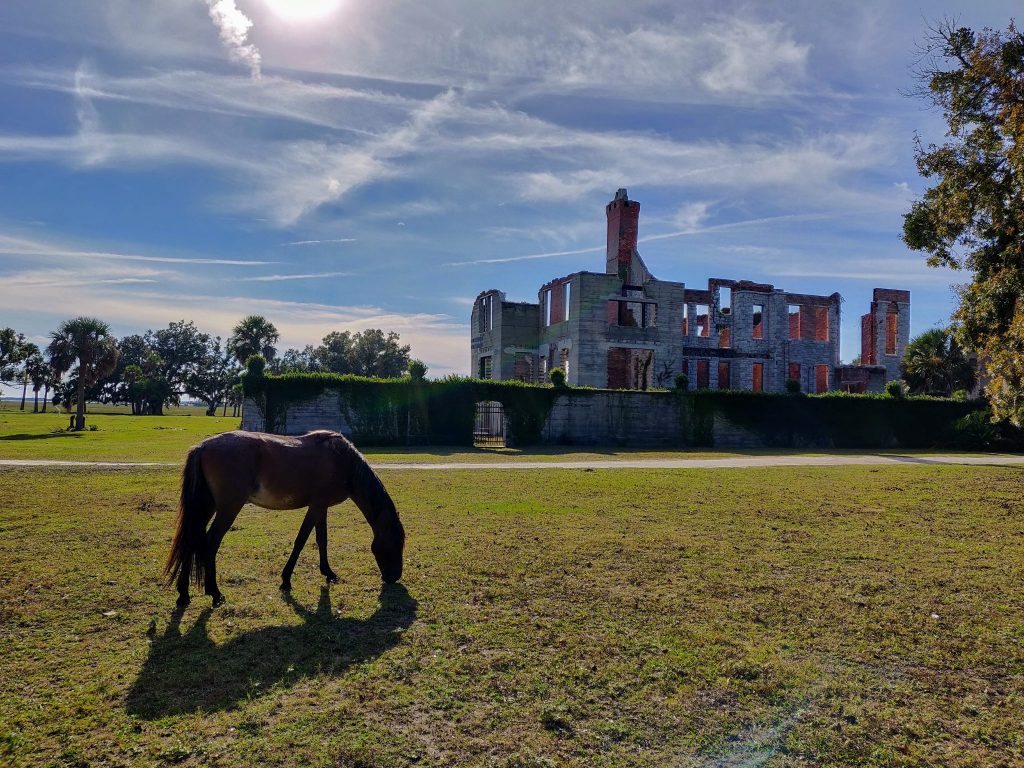
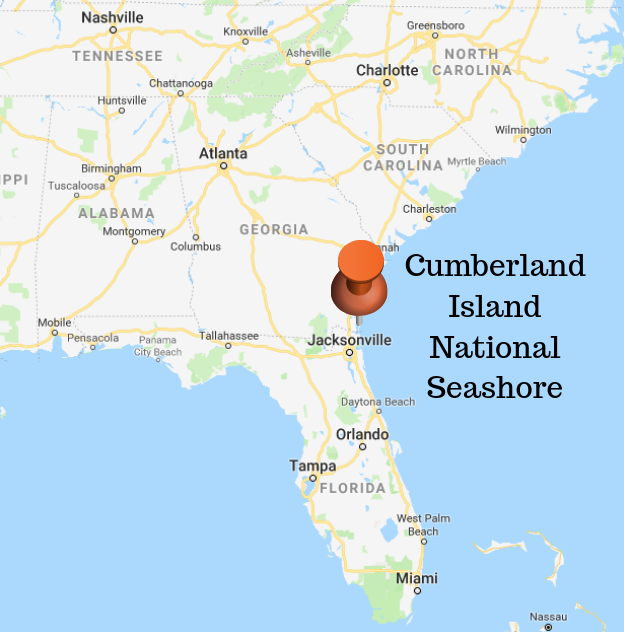
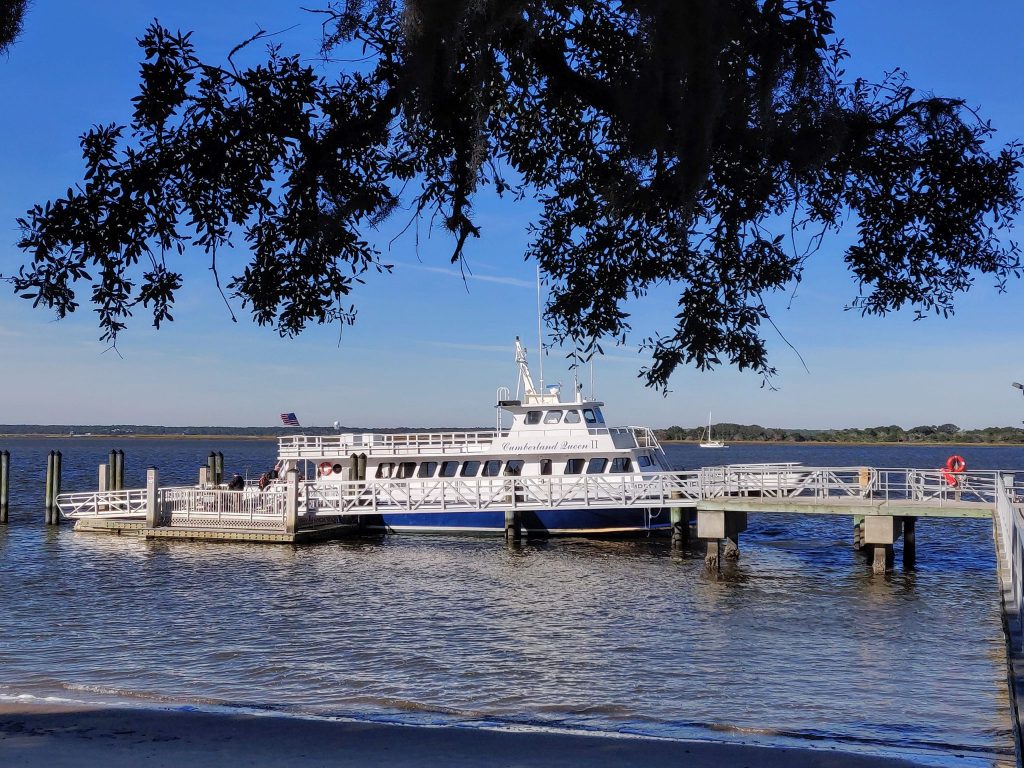
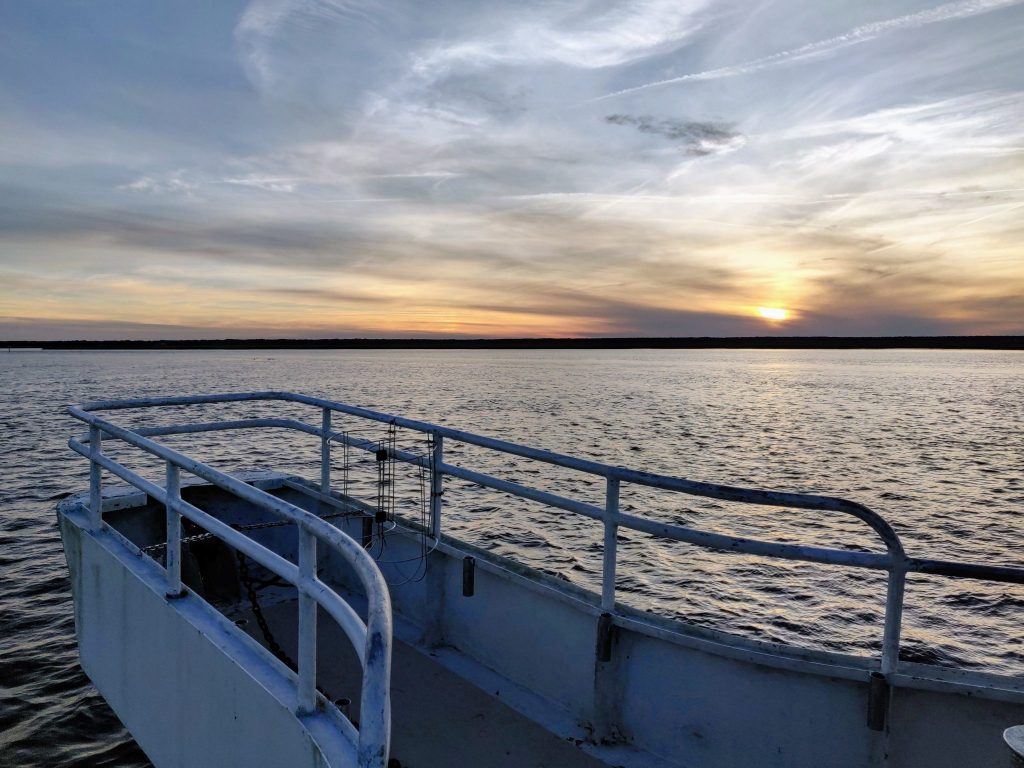
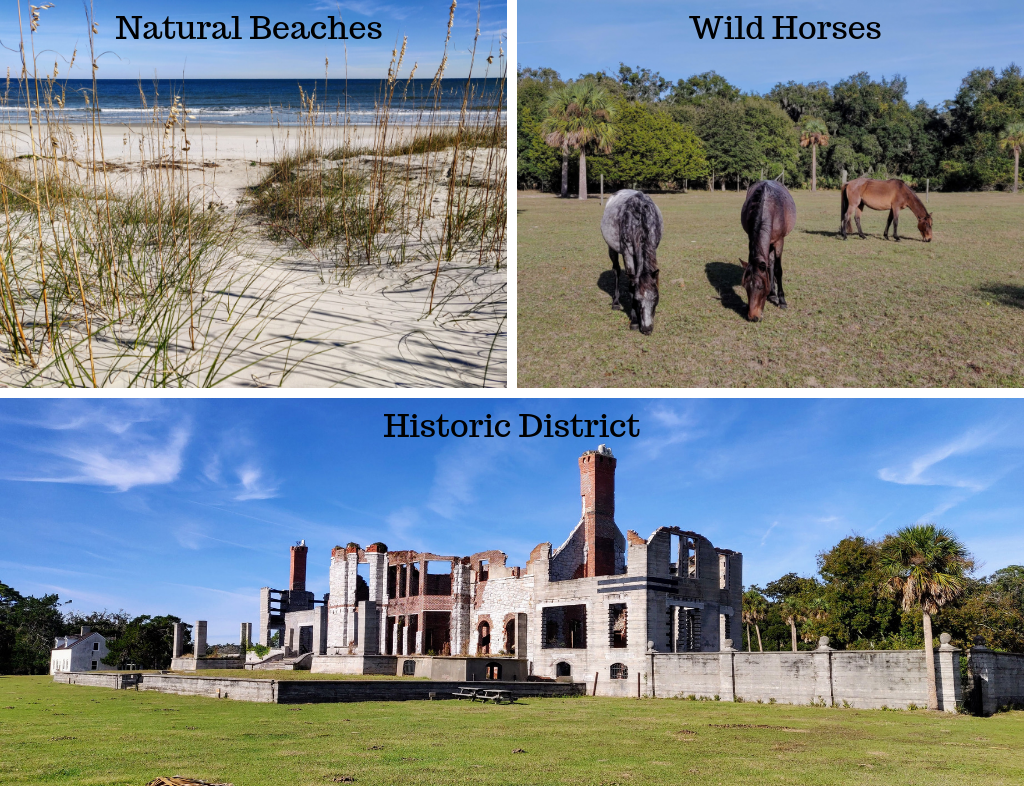
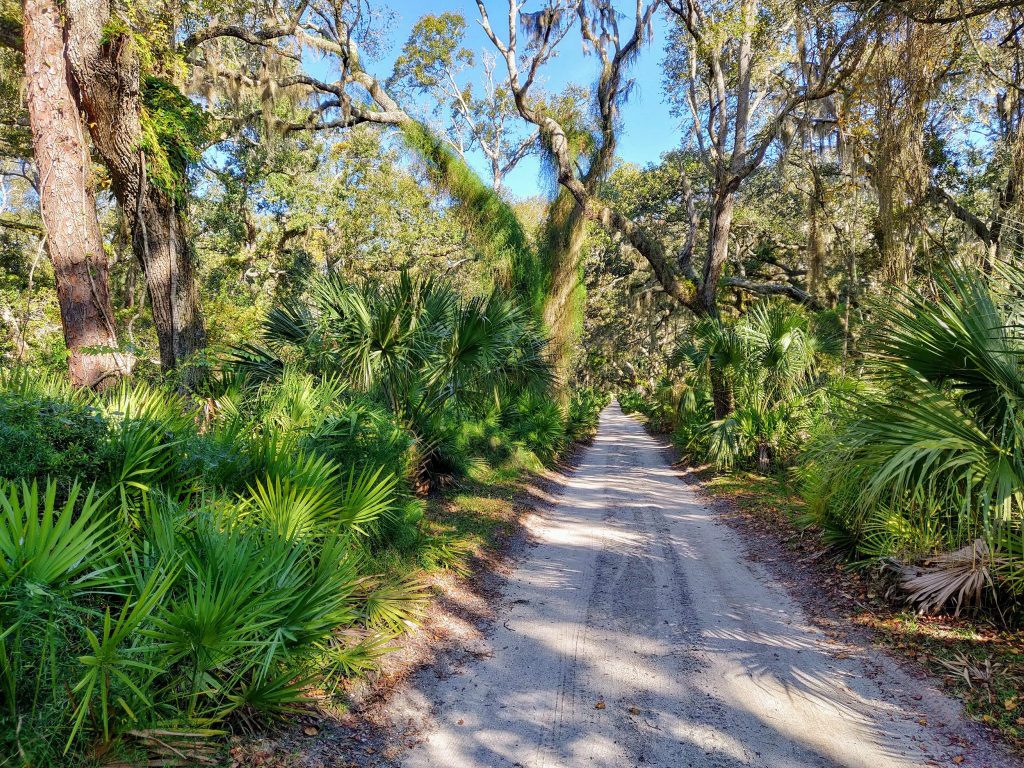


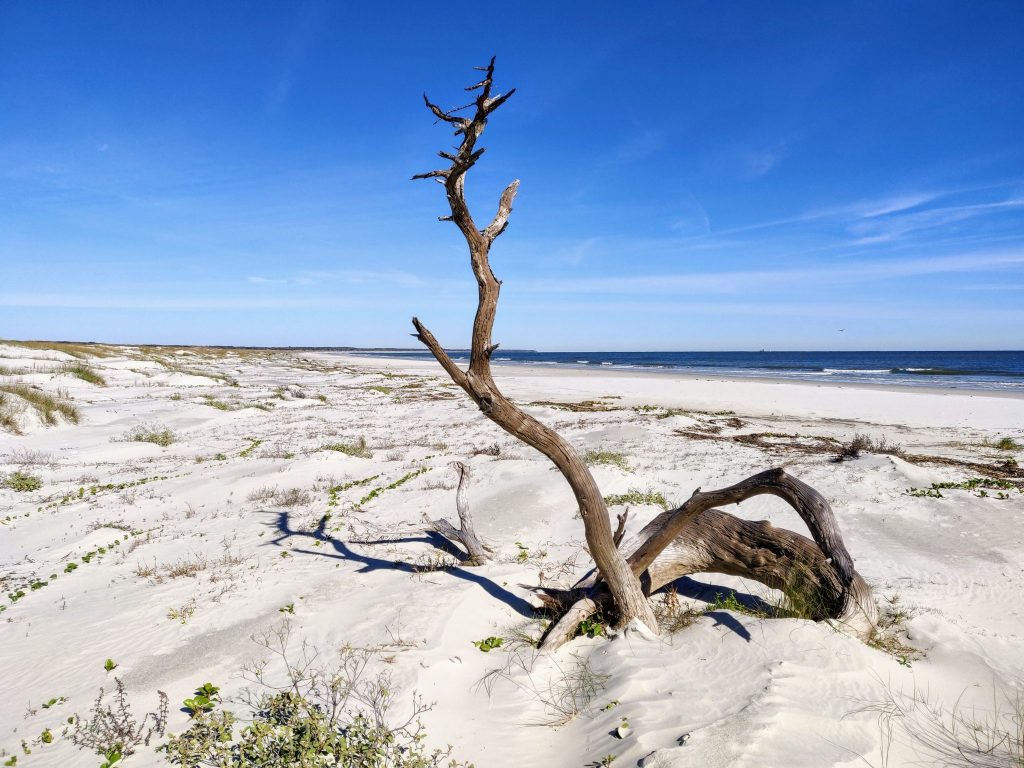
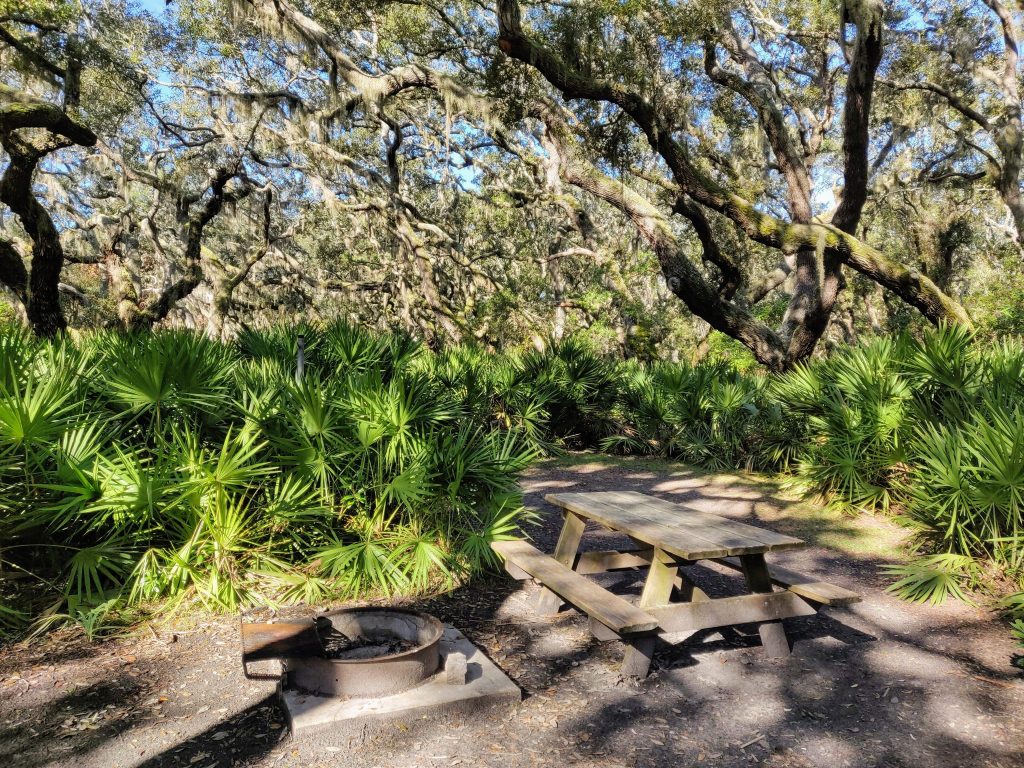
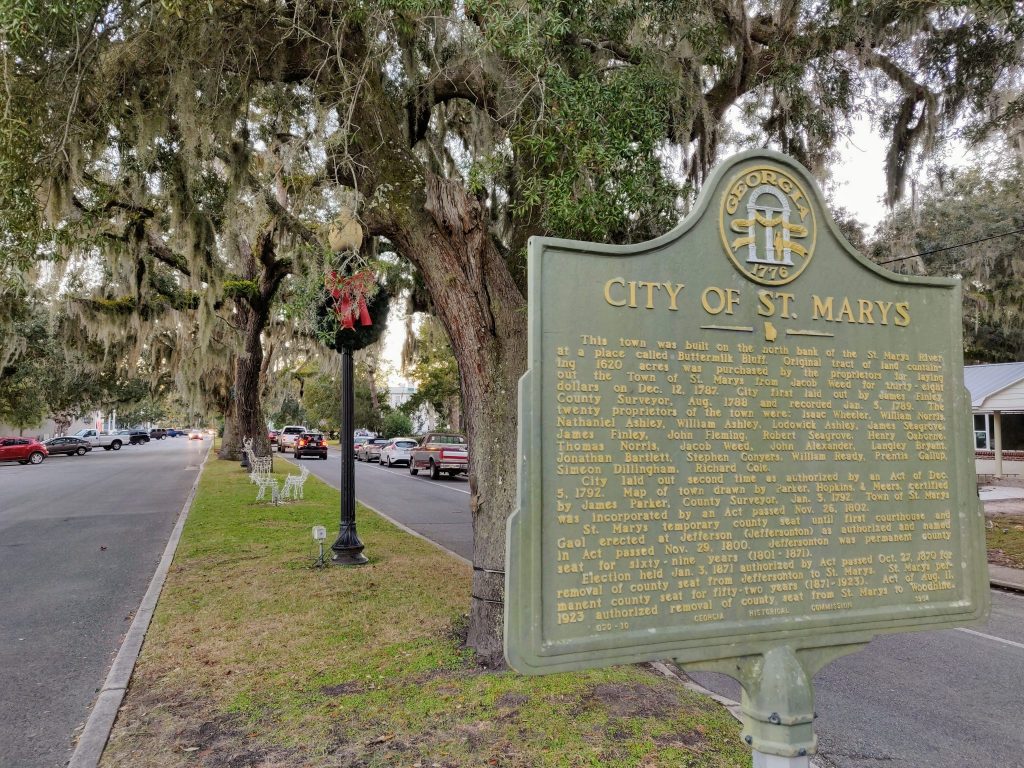


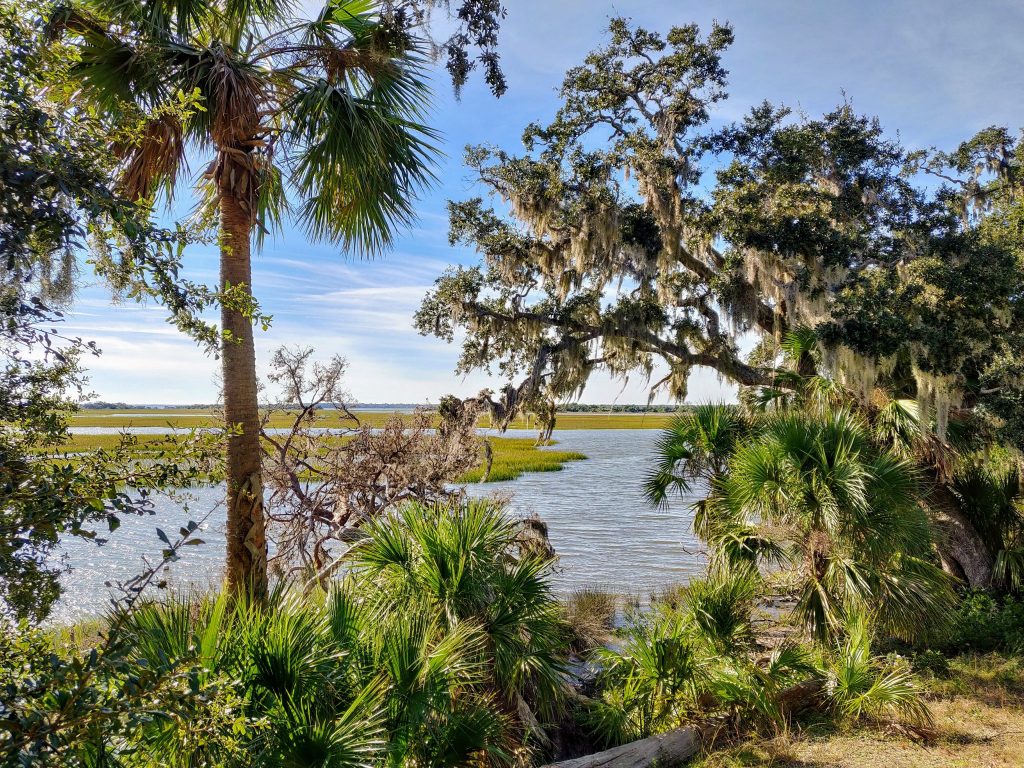



 View Entire Post
View Entire Post


